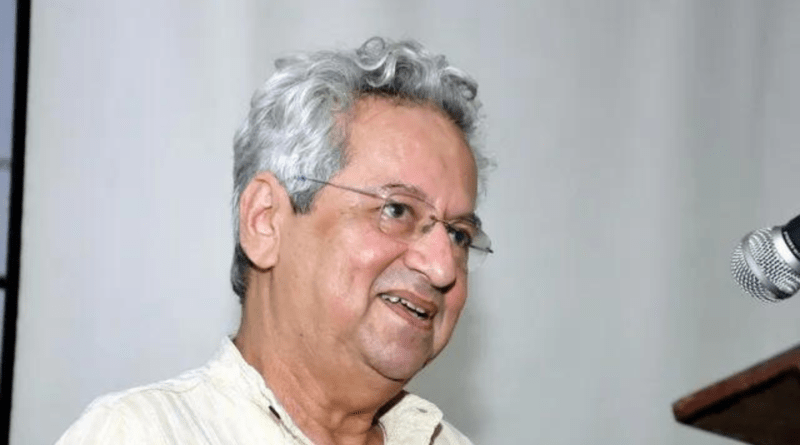Revolutionary Kumar Shahani Being The Devoted Aesthetician
Many cinema reviewers, academics, and cineastes refer to Kumar Shahani as a parallel, new wave, alternate, or formalist filmmaker, despite the fact that he did not identify as such. Shahani, who passed away on February 24, distinguished herself as an avant-garde filmmaker above and beyond all these labels. He was eighty-three.
Shahani enrolled in the screenplay writing and advanced direction course at the Film and Television Institute of India (FTII), Pune, after completing her studies in political science and history at the University of Bombay.
John Abraham, the director who went on to become the enfant terrible of Malayalam cinema, studied alongside him under the guidance of renowned nonconformist filmmaker Ritwik Ghatak. Shahani was also acquainted with the diverse scholarly endeavours and publications of D. D. Kosambi, a polymath.
After that, Shahani travelled to France to attend the Institut des Hautes Etudes Cinématographiques (IDHE) on a scholarship provided by the French government.
He got the chance to serve as an assistant director on Robert Bresson’s 1969 French picture Une Femme Douce, often known as “The Gentle Woman.” Bresson is well-known for his minimalist works.
He was impacted by the cinematic aesthetics of directors such as Alexander Sokurov, Sergei Parajanov, Straub Huillet, Robert Bresson, and Roberto Rossellini during this time.
In 1972, following his return from France, he took on the challenging task of directing Maya Darpan, also known as The Illusory Mirror. The movie is based on the life of Nirmal Verma, a well-known Hindi author. The movie, which is about Taran, takes place in a town in north India shortly after independence. She shares a home with her father, a wealthy landlord, and a widowed aunt. Their family is from a high caste and is conservative. Taran makes an effort to free himself from the constraints of caste, class, and patriarchy.
The film skillfully illustrates the difference between the feudal-age perspective and contemporary individual consciousness. Among other things, dance, non-diegetic inserts, colour patterns, music, and poetry monologues are used to portray the conflict between the individual and society. The movie features scenes where characters are crossing railway tracks, as well as scenes where black-and-white video from the Satyagraha movement and World War II are intercut with each other. Even though the movie features every aspect of new wave/parallel cinema, Shahani’s tendency to employ details from the local culture gives it a unique touch.
Even though the movie won awards, some people didn’t like it. Of them, Satyajit Ray was the most prominent. Although he acknowledged Shahani’s efforts in his book Our Films, Their Films, he criticised the protagonist’s restlessness, calling it inaccurate. After a twelve-year break, Shahani released his next movie. In Tarang (1984), the workers in the factory owned by a family of entrepreneurs are depicted as divided. The movie examines feudal patriarchy in Bombay’s metropolitan setting and shows class conflict on several levels (now in Mumbai). There is a film inside the film.
The film features an impressive group of actors, including Amol Palekar, Smita Patil, Girish Karnad, Om Puri, and Shreeram Lagoo, departing from the abstraction of Maya Darpan. There are song segments as well. However, the film also addresses themes such as idealism, opportunism, false consciousness, pseudo-intellectualism, and the conflict between reactionaries and progressives. An intriguing video about the history of Khayal, a significant abstract genre of Hindustani classical music, is Khayal Gatha (The Saga of Khayal, 1989). This movie is renowned for its rich mythology and visual poetry. The life and contributions of the late Kelucharan Mohapatra, an Odissi dancer and scholar, are chronicled in Bhavantarana (1991).




